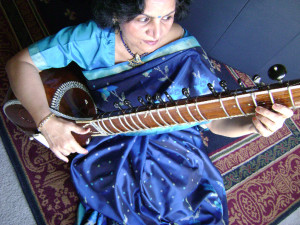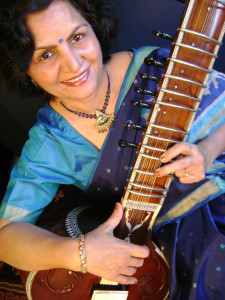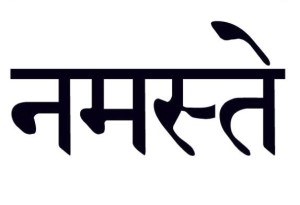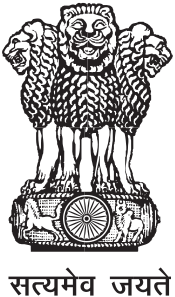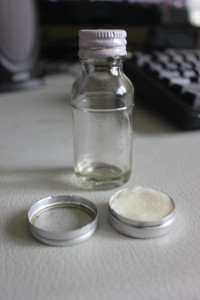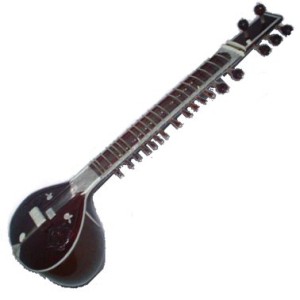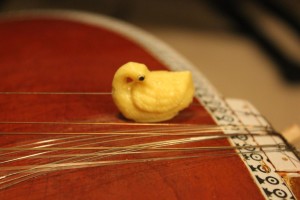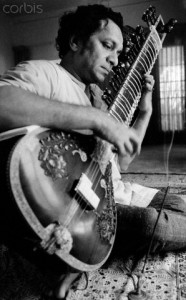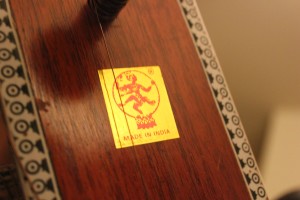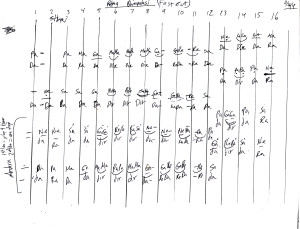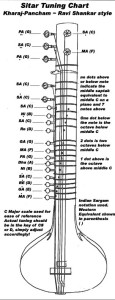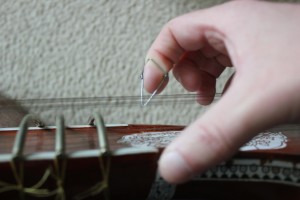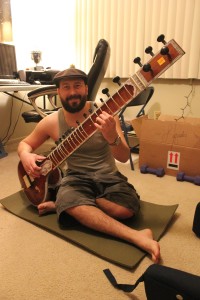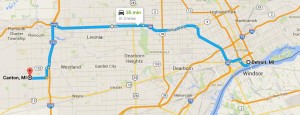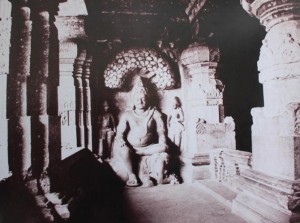Swar-Mandir:
Learning How to Play the Indian Sitar in Detroit with
Master Lady Sitarist Manjula Verma
By: Ryan M. Place
“After silence, that which comes nearest to expressing the inexpressible is music.”
Aldous Huxley (1931)
*This is a long article with 3 parts:
Narrative Lesson, History of India, Links.
The sitar is a beautiful stringed musical instrument from India. Yes, it is considered “exotic” by most Americans and can be somewhat intimidating with its complicated and beautiful musical syntax but learning to play the sitar will definitely relax you. Plus it’s just fun to play.
Manjula Verma runs the ‘Swar-Mandir School of North Indian Classical Music’ in Canton, Michigan. Having such a rare treasure in the form of a talented lady sitarist from New Delhi here in Southeast Michigan, located only 30mins west of downtown Detroit, is truly an incredible opportunity for musicians and lovers of great music to expand their range of capabilities and appreciation.
Born in India, Manjula Verma learned Hindustani (North Indian) classical music early on in life and received her Master’s degree in music from highly esteemed Kurukshetra University. She later moved to the United States and has been teaching here ever since.
A few years ago, with a sitar loaned to me by my musical pot-smoking woodcarver Uncle Hippie, I began taking lessons from Miss Verma after I saw her pamphlet at McKenny Union back when I was a student at Eastern Michigan University.
The ritual is always the same. I arrive for my one hour long lesson. We bow to each other with praying hands and greet with “Namaste”. We then sit barefoot facing each other atop a rug on the floor of her living room. She helps me tune my sitar and then teaches me a raag (song). Sometimes we use an electronic tabla to help keep the beat.
Namaste (pronounced ‘nah-mah-stay’) is a Hindi greeting between Master and student. The student says it first to the Master then the Master says it to the student. Namaste essentially breaks down to a dual-meaning of “I honor the Atman and the light within you” & “may the power within you be strong.”
Manjula Verma then transmits her Gharana. “Gharana” is the musical dynasty/lineage of whomever you study with and learn to play from. When you learn a Master’s style of playing, you learn their ‘gharana’. For instance, I’m a disciple of Manjula Verma’s Swar Mandir gharana.
Should you be lucky enough to study with Miss Verma (aka: Ustad Guruji Manju) and learn her Gharana, it will be an immensely positive life-changing experience for you. Just remember that consistency is key to solid accelerated development of your sitar skills. Ideally, you should plan on taking lessons for 30mins/wk or 1hr/wk but whatever you can swing is good.
You can learn the sitar at any age. Also, you do not need to actually own a sitar, since Miss Verma has numerous sitars available for playing and rental.
Prospectus
This short essay-article, this Sitarticle, is designed to be a very brief elementary introduction to the sitar. The information below is a very brief collection of insights I’ve learned from Miss Verma in the few short years I’ve been her student.
History of the Sitar
Although loosely originating in the raw form of the Kithara instrument in Ancient Greece, the true inventor of the sitar is widely regarded as Amir Khusro (1253-1325).
During the Medieval Ages, Khusro was a Persian Sufi musician at the Court of the Sultan of Delhi in India. Here he greatly modified the Kithara around 1278 AD and invented the Sitar as we know it today. Thus, the modern-day sitar design is over 700 years old.
Before you play the sitar, dip your index finger and middle finger tips into cotton swab saturated in coconut oil.
Anatomy of the Sitar
The main gourd body of the sitar is traditionally carved from teakwood or Punjabi toonwood.
There are 10-20 moveable nickel-plated brass frets. You readjust the frets slightly with each new raag.
The pick is called a Plectrum or in Hindi it is called a Mijrab. Very different from a guitar pick, the Plectrum is a small metal triangle you wear on your index finger. A sitar is always picked with a Plectrum and never plucked with your fingers.
There are 7 strings on the main board = 4 steel Melody strings and 3 bronze Drone strings.
The first main string is called the Baaj Taar and it’s located on the far right.
There are 11-13 Tarab (sympathetic ) strings directly beneath the main strings. Playing the main strings causes these strings to vibrate.
The main resonating gourd is called the Kaddu. There is also an optional secondary gourd, the Tumba. This removable pumpkin gourd is secured at the top beneath the headstock. I took mine off.
The fingerboard is usually made of Tunwood and the tuning pegs are made of Teakwood.
Manka = a decorative bead used for tuning the Baaj Taar, the main string. My manka is shaped like a swan.
Tabla = two small drums that traditionally accompany the sitar. The tabla player provides drone percussion, which helps define the Taal, the time in beats. In the absence of a tabla player, you can use an electronic tabla, which allows you to adjust the pace of the beats to make them slower or faster.
Raags (Songs) Played on the Sitar
Melodies played on the sitar are called Raags. There are hundreds of thousands of raags.
Raags are divided up into season and time of day. This raag-time changes every 3hrs and is called Prahar. There’s 8 prahars. 24hrs = 8 prahar = changes every 3hrs.
For instance, there are Summer evening raags, Winter afternoon raags, Spring morning raags, Autumn evening raags and so forth.
Some fun and simple beginner raags you will learn with Miss Verma are Raag Bhupali (romantic nighttime raag) and Raag Bhimpalasi (Autumn evening raag).
Notes (Swars) combine to form melodies and some sitarists even use the raag system of 72 Melas (scales).
Basic Structure of the Raag
Raag starts with alap (slow tempo; improve) over 3 octaves.
Jod (slow tempo that gradually increases rhythm)
Ulta Jhala (fast vamping) increasing speed
The Gat introduces the tabla, then the tabla gradually stirs in
Gat (3 parts) = Sthai (middle octave), Manjha (mid-set), Antara (upper octave)
Vilambit Gat
Drut Gat
Then finally back to Jhala (vamping on the chikari)
Raag
Alap
Jor Alap
Vilambit Gat
Vilambit Gat toras
Drut Gat
Drut Gat toras
Jhala (vamping)
End on Thai
Octaves & Time Theory of Indian Music
Middle Octave = Sa, Re, Ga, Ma, Pa, Da, Ne, Sa
Ma is the only note with two states = Pure Ma and Higher Ma
Ascending the octave is called Aroha.
Descending the octave is called Avroha.
Saptak (octave) = There are 7 notes per Saptak.
Mandra Saptak = lower octave
Madhya Saptak = middle octave
Taar Saptak = higher octave
Shruti’s = microtones from Tivra to Kshobhini
There are 22 shruti’s in a saptak (including the usual 12 semitones)
Swar = note
Shudh Swar-full tone note (there are 7 shudh swars)
Komal Swar-half note
Tivra Swar-sharp note
Oftentimes you have Varjit Swars (omitted notes) that you don’t play in a raag.
Rhythm
Madhya = normal/medium rhythm
Drut Gut = fast
Vilambit Gut = slow
Each tala (rhythm structure) has 3-108 melas (beats).
Alankar-Hindu Sanskrit word for “ornament”; alankars are used to embellish the raag
Headboard:
1 = Baaj Tar
2 = Jodi
3 = Jodi
4 = Laraj
5 = Kharaj
6 = Chikari 1
7 = Chikari 2
Plectrum (sitar pick) Strikes
Remember, the main string (string on the far right) is called the Baaj Taar.
Da Bol-striking the baaj taar inward
Ra Bol-striking the baaj taar outward
Dir Bol-striking the baaj taar inward and outward fast in one swoop
Learning the sitar from Miss Verma has taken me to a higher level of understanding music. If you live within a one hour proximity of Detroit, I highly recommend learning with her.
Miss Verma is outstandingly talented and we are enormously fortunate to have her in such close proximity. I also keep pushing her to write an instructional book on the Sitar with CD accompaniment and hopefully she does one day to help continue spreading the joy and love of the Indian Sitar.
Also, according to Miss Verma, an excellent sitar will cost around $2,000 and can be purchased from Rikhi Ram (New Delhi, India) or Hiren Roy and Sons (Calcutta, India). Rikhi Ram was founded in 1920 by Rikhi Ram Sharma. He died in 1961, then his son Bishan Dass Sharma took over until his death in 2007 when his son Sanjay Sharma took over.
It takes decades to master the full dynamic range of the sitar, so please be patient. ‘Spose that’s nothing considering The Mahamanvantara, 311 trillion years of Brahama, and how an individual human lifespan is merely a nano-blip of a second in comparison. Many years from now, I hope to one day master the sitar. Namaste!
School: Swar-Mandir School of North Indian Classical Music
Teacher: Manjula Verma
Location: Canton, Michigan (30mins west of downtown Detroit)
Length: 30min to 60min classes for Beginners
Materials: Sitars are provided. You do not need to bring one.
Contact: call or email Miss Verma with any questions 734-776-2129 MKVredrose@yahoo.com
Website: http://www.swarmandir.com/
Facebook: https://www.facebook.com/swarmandirschool
HISTORY OF INDIA
For fun, I’ve compiled a list of some interesting lesser known happenings in India’s ancient and fascinating history. Enjoy!
As of 2015, India is currently pushing a population of 1.45 billion people. 1,450,000,000.
There’s 3 mega cities = Delhi (25mil people in 573sq miles), Mumbai (20mil people in 233sq miles), Calcutta (15mil people in just 72sq miles).
122 languages (big 6 = Hindi, Bengali, Telugu, Marathi, Tamil, Urdu).
India is projected to have the world’s largest population by 2050.
Indus Valley, NW India (7000 BC)
The concept of farming begins here.
New Delhi, India (1500 BC)
A 23ft high column, the Iron Pillar of Delhi, is made of an alloy that will not rust. It still stands there to this day.
Bodhgaya, Bihar, India (461 BC)
Siddhartha Gautama (35) a Hindu born in Kapilavastu, attains enlightenment under the Bodhi tree.
Karnataka, South India (400 BC)
India begins exporting steel to Greece for the Greek Emperors. This wootz steel was also used to make the famous Damascus Swords of antiquity.
Punjab, India (326 BC)
Alexander the Great (aka: Sikander) attempts to conquer India. During the Battle of the Hydapses River, he defeated the hill tribes. Alexander had blacksmiths make giant oversized armor, which he left strewn about in fields. The local hill tribes were so frightened of possible giants, they surrendered. Punjab was annexed to Macedonia. However, impressed with his adversary’s skills, he appointed King Porus to rule the area and Alexander left India.
India (200 BC)
The Law of Manu establishes the Hindu caste system.
India (250 AD)
The game of Chess is invented.
Henan Province, China (495 AD)
Ba Tuo comes from India and establishes the Shaolin Temple of kung fu warrior monks atop Mount Song.
China (527 AD)
Buddhist monk Bodhidharma comes from India and introduces China to Ch’an Buddhism at Shaolin Temple. His 6 treatises become the essential principles of Zen. He is also the inventor of kung fu boxing, which he taught to the monks at Shaolin Temple.
Allahbad, India (636 AD)
Annual festival, Maha Kumbh Mela, begins. This festival still occurs and every year it attracts over 100 million people and remains the world’s largest gathering.
Shankara (788-820)
Hindu mystic philosopher and poet-author of The Vivekachudamani (Crest Jewel of Discrimination).
India (700’s AD)
Padma Sambhava pens the Bardo Thodol the Between State (Tibetan Book of the Dead). This book was transport to and buried in Tibet.
Delhi, India (1278 AD) estimate
Persian Sufi musician Amir Khusro invents the modern-day sitar.
Romania, Europe (1300’s)
Gypsies, ancestors of Turkish conqueror Tamerlane, arrive from India.
India (1497-1498)
Portuguese explorer Vasco da Gama becomes the first person to sail from Europe to India.
Northern India (1526)
Mughal Empire starts.
Goa, India (1556)
A Portuguese ship carrying a printing press and 14 Jesuits destined for Abyssinia (Ethiopia) stops at Goa. Christian missionaries on Goa hijack the printing press, install it on Goa and thus, printing in India is born.
Madras, India (1640)
British colonizers fortify the city of Madras, transforming it into a regional trading center.
Golcanda, India (1660)
At the Kollur mine, the massive 115-carat Tavernir diamond is mined. From this diamond, the huge dark blue one-of-a-kind 46-carat Hope Diamond is cut.
Fort William, Calcutta (1756)
Bengal’s ultra-tiny dungeon for British POW’s, the Black Hole of Calcutta, is rat-infested and grotesque. Fort William was a walled fort that was formerly a major factory of the Dutch East India Company in the 1600’s.
Afghanistan (1839)
The Brits crush an Afghan revolt to keep the country of Afghanistan as a buffer between Russia and India in an effort to block Russian expansion.
India (1846)
The creation of Jammu and Kashmir states creates an India-China boundary dispute that lingers to this day. There was even a short border war in 1962 between China and India over it.
India (1857-1947)
The British raj (rule). The British Empire ruled India. During this time, Britain had 125 territories and India was considered the jewel in the crown of various properties including Hong Kong, Australia, South Africa, West Indies (Jamaica, Trinidad), etc.
Janigpur, West Bengal, India (1858)
British administrator Sir William Herschel uses fingerprints to identify prisoners due to high illiteracy rates. Sir William has villagers sign documents with handprints in this first ever documented use of fingerprint identification.
Indian Ocean (1874)
A giant squid sinks the 150-ton ship Pearl. All 200 passengers onboard the steamer ship Strathowen, en route to India, witness this incident. Giant squid are massive, rarely-seen, 500ft long monsters that the Scandinavian’s call Kraken. Also consider that the Indian Ocean west of Java is a shocking 26,000+ feet deep. Who knows what’s down there?
Bombay, India (1899)
Bollywood, the massive Indian film industry, begins.
Madras, India (1913)
Genius math prodigy Ramanujan sends a Cambridge math professor in England a 10page letter with 120 math theorems. His genius is instantly recognized and he moves to England to study at Cambridge. In 1919, Ramanujan returns to India and dies at 32.
Calcutta, India (1929)
Macedonian Roman Catholic missionary-nun, Mother Teresa, moves from Macedonia to India and becomes Mother Teresa of Calcutta.
Bikaner, India (1938-1946)
Diana Rigg (the famously hot Mrs. Emma Peel of excellent television show The Avengers) lives in India for the first 8yrs of her life. As a result, she is fluent in Hindi.
Maihar, India (1938)
Ravi Shankar begins learning sitar under the Maihar gharana of Allauddin Khan.
Calcutta, India (1944)
The human skull, skeleton and remains trade begins flourishing due to a London scientific supply company seeking alternate suppliers. India eventually outlawed the export of human remains in 1985 but this only made the items more expensive and the practice reputedly still thrives. As recently as a few years ago, it was estimated that some 200 gangs were supplying around 600 international smugglers who export these remains all over the world.
India (1947)
The British rule of India officially ends and India partitions a Northern chunk off, thus creating the country of Pakistan. Muhammad Ali Jinnah rules Islamic Pakistan and Jawaharlal Nehru runs Hindu India.
India (1955-1967)
A marvel of human engineering, the Nagarjuna Sagar Dam is built. At 490ft high and 1 mile long, it’s the world’s largest masonry dam. It took over 50,000 people working full-time some 12 years to build.
Dharamsala, Punjab, India (1959)
Fleeing Chinese-occupied Tibet, Dalai Lama Tenzin Gyato (24) winds up in exile in Dharamsala with 80,000 Tibetans. The Dalai Lama and his followers sill remain in exile here.
Goa, India (1966)
Hippies from the United States travel to the island of Goa and help turn it into a psychedelic party island. Once an outpost of the Dutch East India Company in 1665, Goa becomes known for electronic music-fueled hard partying beach raves 350yrs later.
New Delhi, India (July 6th, 1966)
George Harrison, aka: “the Quiet Beatle”, meets Ravi Shankar and Ravi takes him to buy a sitar at Rikhi Ram & Sons sitar shop.
Srinagar, Kashmir (September 1966)
George Harrison returns to India and spends six weeks learning the sitar from Ravi Shankar on a secluded houseboat.
Rishikesh, India (1968)
The Beatles study Transcendental Meditation with guru Maharishi Mahesh Yogi at his ashram. They write all of their material for ‘The White Album’ during their extended stay here.
Delhi, India (1970)
Supremely talented American classical minimalist musician Terry Riley lives in India, studying raags.
Hyderabad, India (1996)
2,000acre film studio complex, Ramoji Film City, is constructed. Nicknamed “Tollywood”, this Bengali-Telugu version of Bollywood is much larger than Bollywood.
Bangalore, India (2013)
Ypsilanti, Michigan residents Rene Greff & husband Matt Greff (owners of Arbor Brewing Company in Ann Arbor and Ypsilanti) open the first ever American craft beer brewery in India called the Arbor Brewing Company.
http://www.arborbrewing.com/locations/india/?age-verified=9b9a988acb
India (2021)
36yr old Ryan M. Place ventures to India to explore the entire country and buy a real sitar. Hopefully!
Links
Ustad Vilayat Khan
Ravi Shankar
Ancient Vedic Chants
https://www.youtube.com/watch?v=zjcVbd1O7KQ
Ustad Vilayat Khan-Raga Bhankar (one of the best sitar albums of all time)
Ravi Shankar-Ravi in SanFran album
Rikhi Ram sitar makers (New Delhi, India)
Hiren Roy sitar makers (Calcutta, India)
Shakti & John McLaughlin-La Danse du Bonheur (1976) Zakir Hussain, Lakshminarayana Shankar, etc.
[/showhide]

